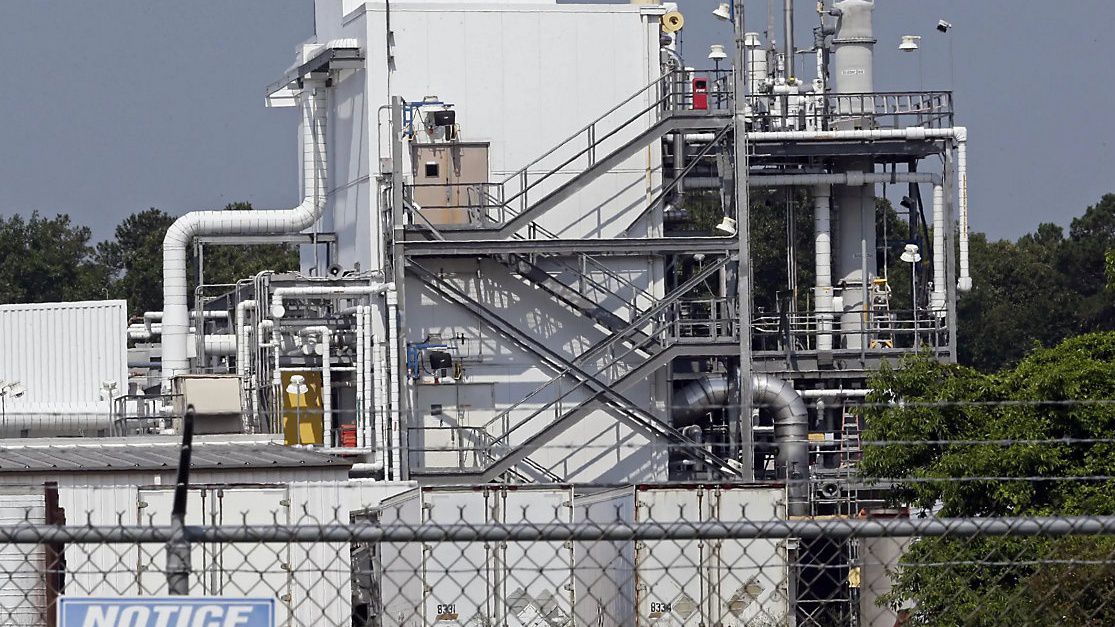The EPA set new limits on six PFAS substances, known as "forever chemicals," in drinking water Wednesday.
North Carolina has led the way in testing for PFAS and regulating drinking water contamination since a chemical called Gen-X was first found in the Cape Fear River in 2017.
EPA Administrator Michael Regan, who used to lead North Carolina’s Department of Environmental Quality, traveled to Fayetteville to make the announcement Wednesday.
“Drinking water contaminated with PFAS has plagued communities across this country for too long,” Regan said.
“Our PFAS Strategic Roadmap marshals the full breadth of EPA’s authority and resources to protect people from these harmful forever chemicals. Today, I am proud to finalize this critical piece of our Roadmap, and in doing so, save thousands of lives and help ensure our children grow up healthier,” he said.
He spoke near the site of the Chemours plant, which was found responsible for dumping PFAS chemicals in Cape Fear River for decades.
“We are thankful that Administrator Regan and the Biden Administration are taking this action to protect drinking water in North Carolina and across the country,” Gov. Roy Cooper said in a news release Wednesday. “We asked for this because we know science-based standards for PFAS and other compounds are desperately needed.”
PFAS compounds, per- and polyfluoroalkyl substances, are used to make things like waterproof clothing, nonstick pans and firefighting foam. They are found commonly in takeout containers and food packaging. They do not degrade in the environment, which is where the name “forever chemicals” comes from.
The chemicals have been linked to kidney cancer and low birth weight, according to environmental regulators.
The new EPA rules give public water systems three years to complete testing for PFAS and five years to comply with the new levels.
“Having federal standards for these forever chemicals in our drinking water provides certainty for our public water systems and our residents,” said DEQ Sec. Elizabeth Biser. “DEQ has already worked with water systems to measure for PFAS in advance of this rule, so they are well prepared to utilize the funding available now to take action and protect the people of North Carolina.”
But North Carolina has a long way to go to clean up drinking water systems and get them in line with the new federal PFAS rules.
State regulators already require water systems to test for PFAS. As of now, there are over 300 water systems in North Carolina that have PFAS levels higher than the new EPA rules, according to DEQ.
“That includes 42 municipal water systems serving nearly 3 million residents combined, as well as approximately 20% of small public water systems tested,” DEQ said in a news release.
In a statement Wednesday, the EPA pointed to Wilmington’s water utility as a model for how communities can get PFAS out of drinking water.
“The Cape Fear Public Utility Authority, serving Wilmington, NC – one of the communities most heavily impacted by PFAS contamination – has effectively deployed a granular activated carbon system to remove PFAS regulated by this rule. Drinking water systems will have flexibility to determine the best solution for their community,” the EPA said.
The state has been working with North Carolina’s local water systems to get PFAS out of water sources and install new filters for drinking water, including tapping into federal fund from the Bipartisan Infrastructure Law meant to help rural and underserved communities.
This new federal funding announced Wednesday will add $29 million to that effort in North Carolina, part of $1 billion the EPA plans to spend on PFAS nationally.
“We are actively encouraging systems to take advantage of available federal funding and we are making funds available to systems with PFAS detections to support their actions to reduce PFAS,” Biser said.
Environmental groups applauded the EPA’s move to limit PFAS in drinking water, but some questioned why the federal government hasn’t regulated polluters more.
“They refuse to regulate the corporations directly by requiring them to stop the pollution at the source, but instead put the burden on utilities to either filter this dangerous filth, or do the government’s job to pressure companies to stop discharging it,” Cape Fear River Watch Executive Director Dana Sargent said in a statement.
“It’s time the USA adopts the precautionary principle followed by other developed countries, which requires companies prove their products are safe before they enter the environment, rather than waiting for people to get sick and die, before beginning a decades-long process to regulate them,” she said.



